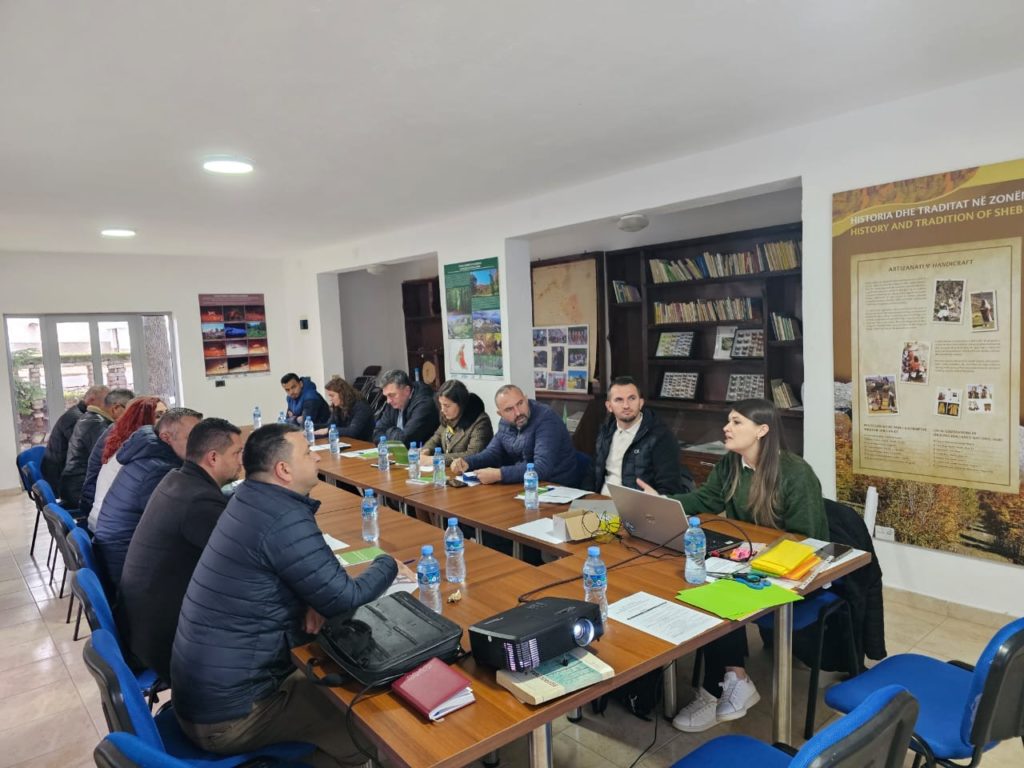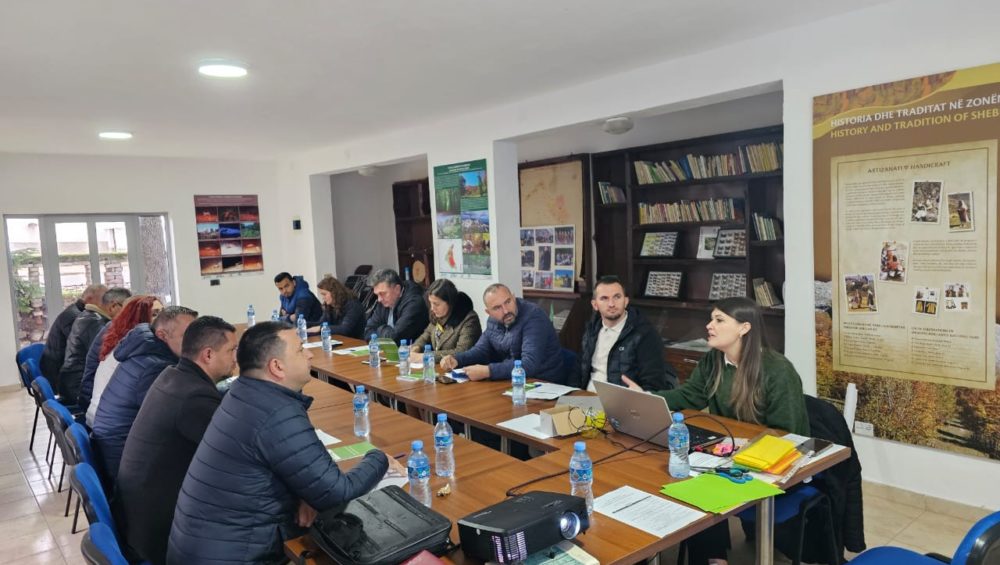Librazhd, December 5, 2023. The first seminar in the series of workshops on the process of developing the action plan for the ecological corridor Polis-Valamare-Rungaje-Moravë-Gramoz – an important corridor that connects five protected areas in the southeast of Albania, took place in Librazhd with the participation of the local stakeholders.
The meeting took place at the RAPA Elbasan office in Librazhd, attended by 18 participants representing the municipalities of Librazhd and Përrenjas, RAPA Elbasan, local NGOs, and the tourism sector. Key takeaways from the discussion include the crucial role of local authorities in project engagement, highlighting the poor management of natural resources. Emphasis was placed on the importance of correctly implementing concession contracts and executing rehabilitation plans. The Bushtrica river case was identified as needing special attention due to its status as the last pristine river in the area. The significance of institutions’ staff training for responsible decision-making was underscored.
Furthermore, there was a call for municipal council representatives to actively participate in project activities, and the municipalities expressed their willingness to support the evaluation of the territory as an OECM (Other Effective Area-Based Conservation Measure).

About the ecological corridor:
The “Polis-Valamare-Rungajë-Moravë-Gramoz” ecological corridor is located in south-eastern Albania and represents a remote and mountainous region partially including the municipalities of Librazhd, Përrenjas, Pogradec, Gramsh, Maliq, and Skrapar with an area of around 1600 km2. The corridor provides an important shelter for a significant number of species, allowing for their movement between the existing protected areas. The project area is particularly important for sustaining populations of large mammals, including brown bears, grey wolves, and the critically endangered Balkan lynx.
However, the corridor is significantly threatened by habitat fragmentation due to logging, fires, urbanization, unsustainable land use practices mainly used for agricultural purposes, and poor management of natural resources, risking to compromise corridor’s ecosystems and biodiversity integrity, and its connectiveness. Despite the fact that most of the corridor is excluded from the protected areas network, it remains a significantly important area that enables the movement of important species, especially those that require a vast habitat.
The corridors address the connectivity between five protected areas: Shebenik National Park, Stravaj-Sopot Natural Park, Pogradeci Lake Protected Landscape, Guri I Nikes – Lenie- Valamare, and Mali i Tomorrit National Park.







